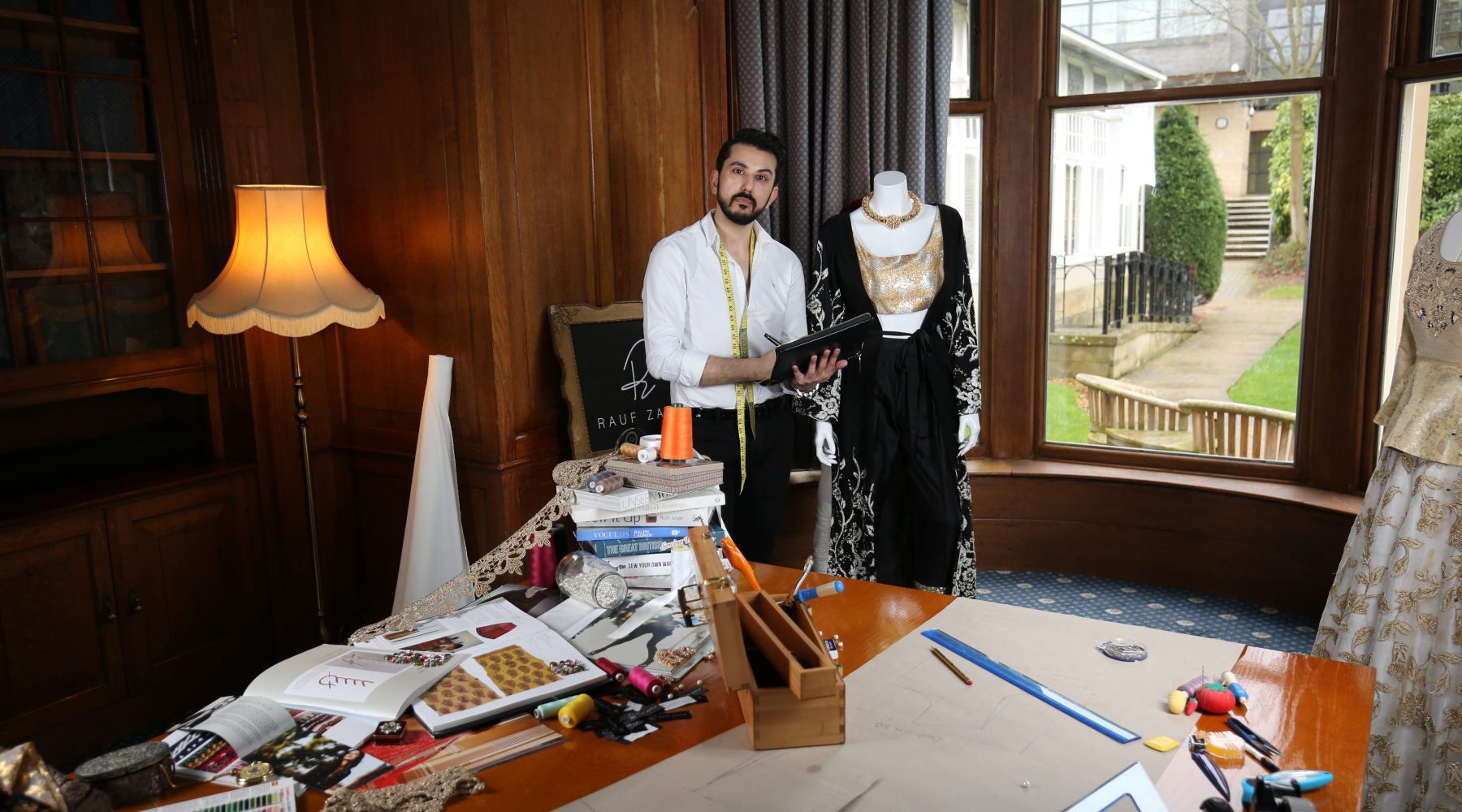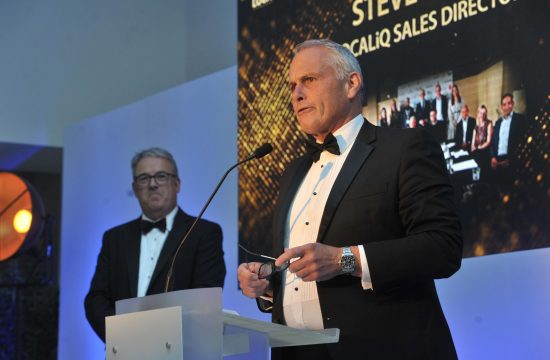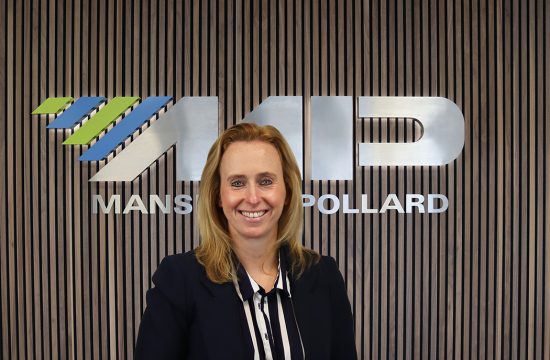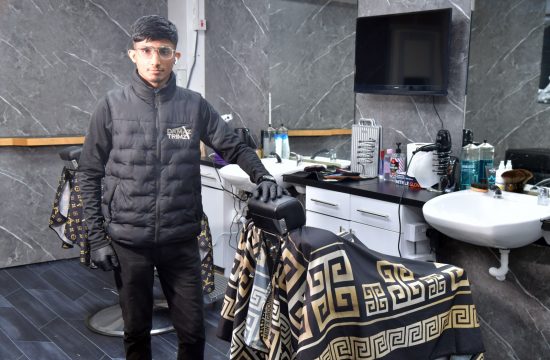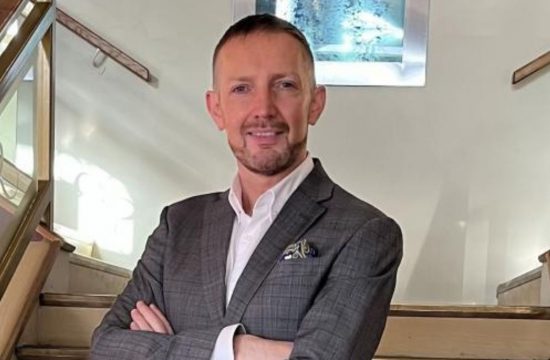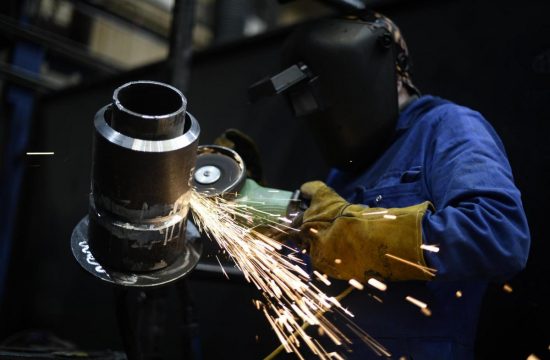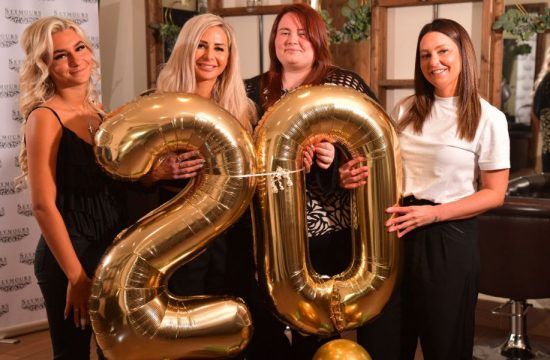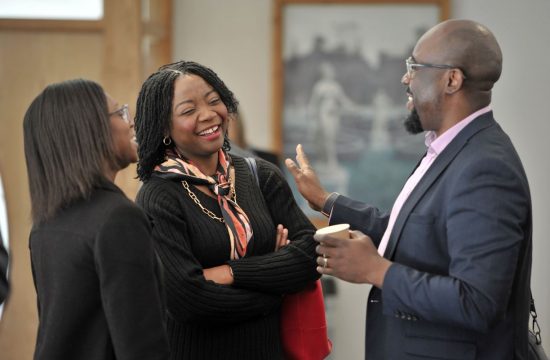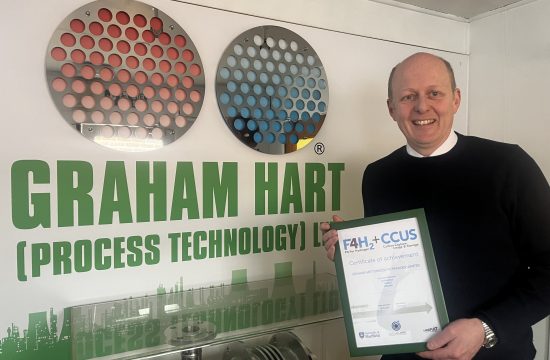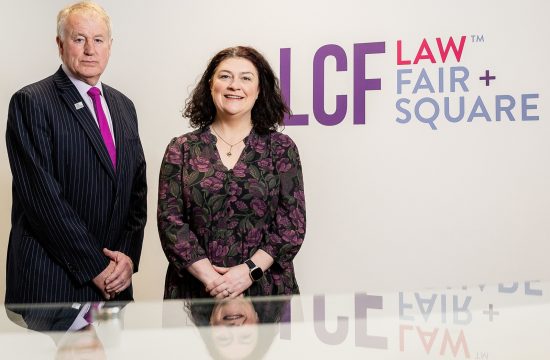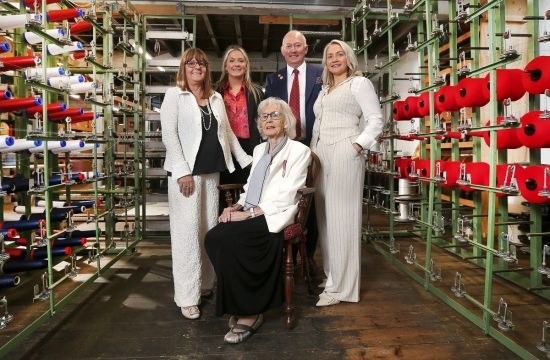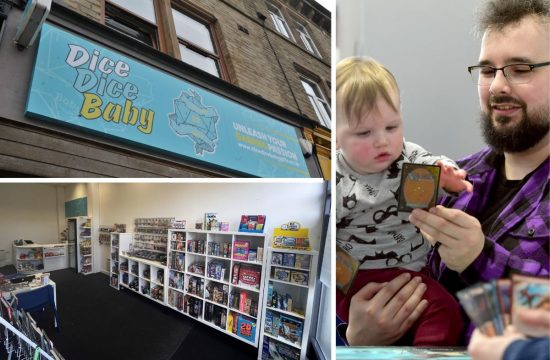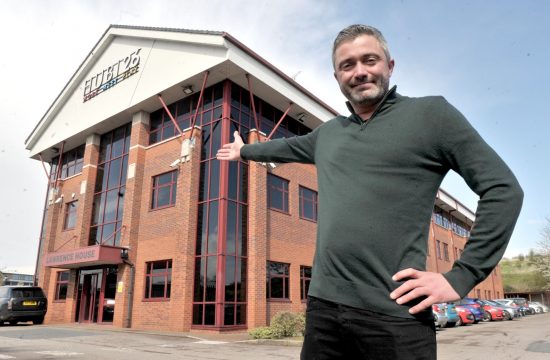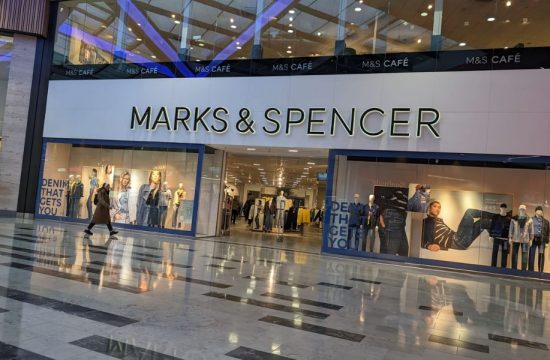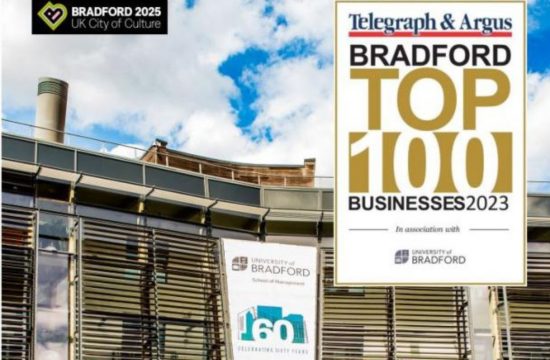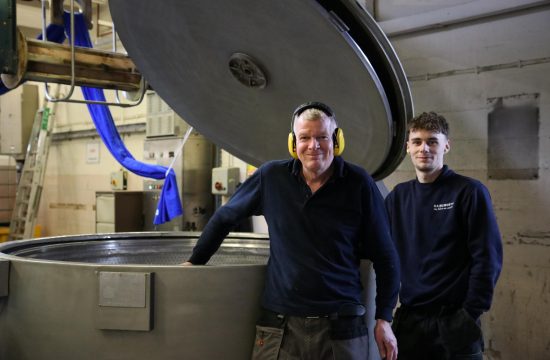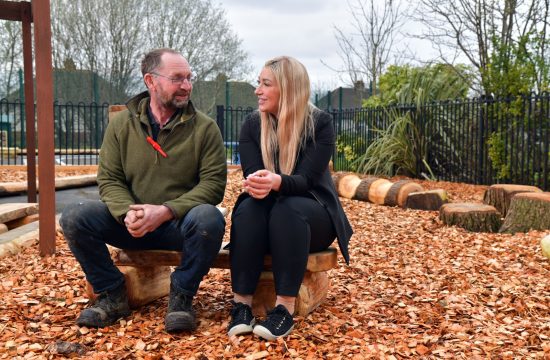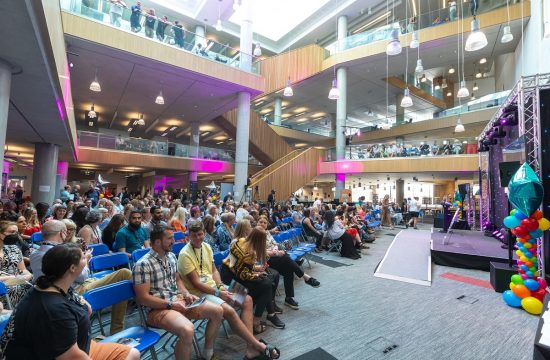By Annette McIntyre
Disappearing skills are being re-taught in Bradford with the help of award-winning designer and tailor Zahid Rauf.
Zahid went against traditional norms when he decided to study embroidery at university.
But his decision paid off – and he has built a successful career as a designer and tailor. He began by tailoring for close family and friends but got his big break when he was asked to design an outfit for English actress Amara Karan. He earned national recognition and went on to design an ensemble for Bollywood actress Bipashu Basu. He became a finalist for Best Newcomer in the IAFA international awards and won the award for Bridal Wear of the Year 2014 presented by Asian Wedding Experience.
His stunning handmade creations are inspired by Pakistani and Rajput heritage.
And now he wants to encourage young people in Bradford to learn about their heritage and to view art and design as a viable career choice.
Zahid is taking part in a V&A programme to encourage young people to do just that.
His own interest in fashion, styling and design was sparked by his family background as he grew up in Great Horton. His father had moved from Pakistan in the 70s to work in a textile factory. His mother’s family, who had moved from India to Pakistan after partition, were very artistic.
“Mum’s family did a lot of more hand techniques in terms of hand embroidery, and my aunts used to make their own block prints. So if anything I would say it has all come from my mum, watching my mum, make garments, and then seeing embroidery techniques,” he said.
He believes his family were not really happy initially with his decision to study embroidery – often seen as something a woman should do.
“I think on top of everything else my mum’s side of the family were all science based, so all the jobs they had were more like doctors and pharmacists.”
He thinks his family were unsure about his choice – and were concerned he might not be able to support himself.
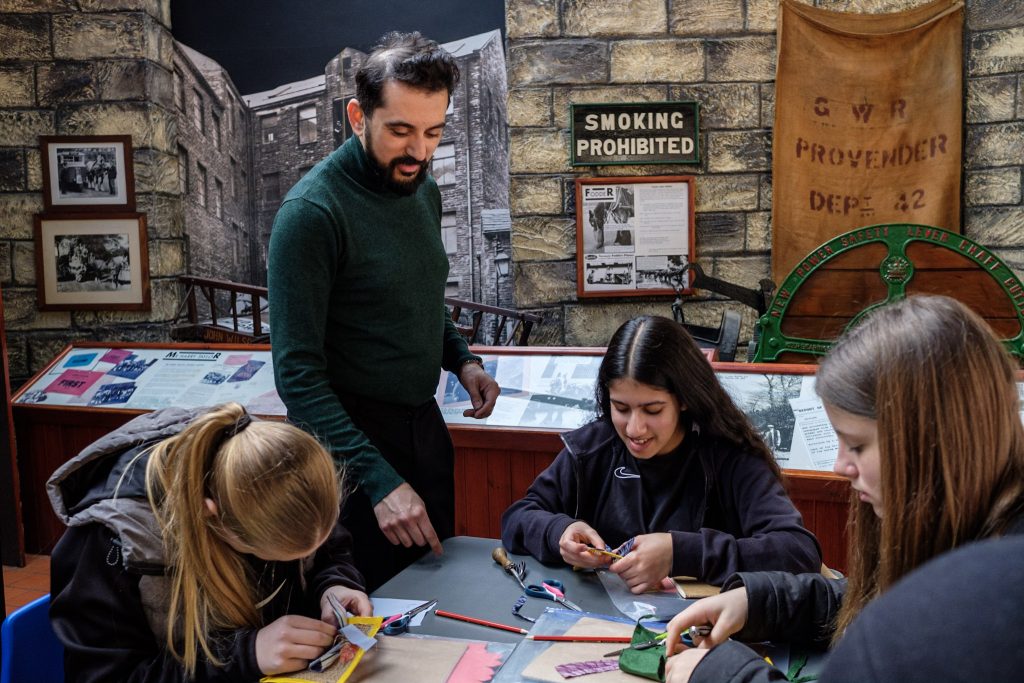
“I mean mum never really said it. It was more you could see. It was like ok you want to go to university – and I was the first one to go to university from our family as well – and then it was like oh to study embroidery. I think it was quite a lot for them to take in.”
He added: “To tell you the truth, when I look back now I don’t think the big factor was that it was viewed as a woman’s job. I think it was the struggle that they’d seen coming over from Pakistan and the struggle they’d seen building their new life here. It was more about we just want you to be happy and be able to sustain a life for yourself.”
He added: “I know that as I progressed with it mum could see where I was going with it and I think she thought ‘he is managing to sustain a decent life’. And then the tables turned and she did accept it because she could see I could stand up on my own two feet.”
Although his family had always supported his decisions, and his mum was happy to share her knowledge, they became more comfortable with it as they saw him doing well
“So we’d exchange a lot of ideas and mum would say that doesn’t fold quite like that so I think we need to take this approach,” he said.
He played his own part in passing on knowledge when he taught textiles at Oasis Academy Lister Park.
“They employed me to come in and do quite a similar project in terms of the work I’m doing now. But that was again to push the students in terms of showing them they can make a living if they can go into art and design – whether that’s film, photography, fashion and crafts or what not. There is a job out there. It’s just that it is not talked about really.”
“They got fantastic grades for their GCSEs and A levels those three years that I was there with them. So I felt really quite proud of that in that I’d managed to make a bit of a change. The girls really enjoyed it and there were a couple of boys as well. So it was good to make them realise that it doesn’t matter even if you are a guy – you can actually go into it. You know it is not that it’s only a woman that can go into this.”
That in turn led to him working with mothers of the students in a ten-week pilot scheme designed to empower women.
He is now involved in DesignLab Nation, which brings together Secondary schools in partnership with the Victoria and Albert Museum, London, regional museums and creative industries to inspire students and support teachers through in-depth design projects.
DesignLab Nation is a fully funded project, supporting students and teachers in four regions nationally – Bradford, Blackpool, Ipswich and Plymouth. In Bradford it is working with Cartwright Hall and Bradford Industrial Museum.
Among its aims the programme wants to inspire the next generation of professional designers, makers and innovators, and to equip young people with 21st century skills necessary for workplaces of the future.
Its other aims include developing partnerships with regional museums, designers and schools to expand the reach of the V&A’s collection and expertise outside of London, as well as focussing on design heritage and industry, highlighting both historical and contemporary design.
The project has previously worked in Blackburn, Coventry, Sheffield, Stoke-on-Trent and Sunderland.
DesignLab Nation is generously supported by Sarah Nichols and the Annie Tranmer Charitable Trust. DesignLab Nation Bradford is supported by Art Jameel as part of the V&A’s Jameel Programme.
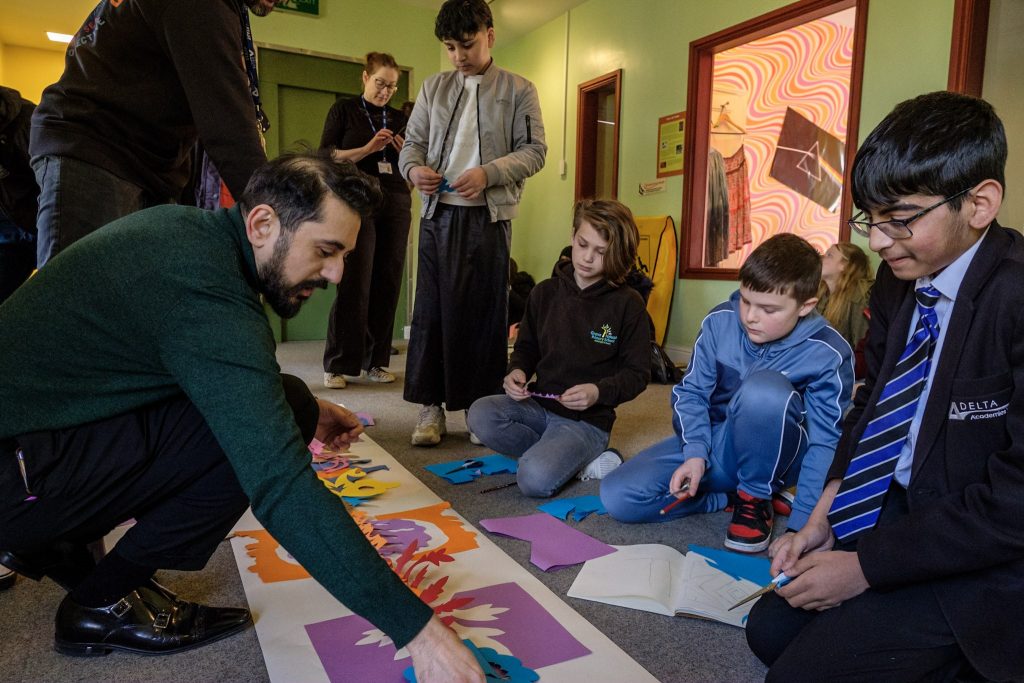
The programme started in 2017 as a pilot scheme.
A recent V&A report said: “In recent years, the UK has witnessed a dramatic decline in uptake of creative subjects by students at GCSE level, with Design & Technology suffering a staggering drop of 67% since 2010.”
Zahid is working with years eight and nine in three secondary schools, Hanson Academy, Beckfoot School, and Beckfoot Upper Heaton School.
“Hopefully this is giving a taster of design in terms of what you can do with it and in terms of a creative career – you know you can have a career in this.
“I’m hoping that this will develop into them selecting a creative subject as a GCSE, A Level and then hopefully a job.”
He said: “The great thing is that they’re funding everything, including the trips down to the V&A. A lot of young people don’t even know what the V&A is. But the cohort on the first trip that we took out were amazed at what was there.”
Young people are taking part in workshops in the V&A and the two local museums – Cartwright Hall and Bradford Industrial Museum. Sessions are also taking place at local company Melrose Interiors.
“They are learning Bradford’s history and then they are looking at Islamic art and textiles in the V&A as well. Because a lot of the design challenge is based on Islamic art,” Zahid said.
Zahid wants to see a centre for craftspeople to set up and work in Bradford.
He said: “What would really be beneficial is if we actually saw craftspeople doing it. For young people to think that we can do this as a profession.
“And I keep on having that same discussion with people that I know in Bradford. You know there are so many beautiful buildings, I don’t understand why they’re all just derelict. Could one of them be converted for artists or students who have graduated to start their craft in something that’s reasonable?
He added: “It is something that I’m talking to quite a few people about because I don’t understand why it can’t be done. Because if we’re offering this, then what in seven years’ time when they’ve finished their education, if they don’t want to go down south, if they don’t want to go abroad, could they do something in their own city?
“But if their own city isn’t showcasing what it has then why would that child want to do it?”
He stressed: “There are so many rich people in Bradford – why can’t they do something? A lot of them own the buildings. I know quite a lot of them personally and I have the discussion – ‘do you know you’ve got a building which is just sat there – why are you not doing anything with it?’
“I hope I manage to knock on the right door one day and someone will manage to do something. It would be great to see it happening where a child will think ‘actually you know we can do that because that’s been illustrated in our own city’.”
Zahid is hoping that the V&A programme will help bring back skills that have been lost.
“The biggest focus on this is about cultural heritage,” he said. “So it’s all about bringing back the old techniques that have been lost and creating new ideas from them also. It’s not just bringing back the past and leaving it there. It’s almost mixing it in with what’s happening now really – you know, new techniques as well. It is still about reviving them, but creating something new and amazing with them as well.”
He said: “That’s something I’m quite big on because a lot of the techniques have been lost over the years and people just don’t seem to have clue unfortunately how to do them”.
The other push is about sustainability and up-cycling – and Zahid has been impressed by how much young people understand about the variations in quality between different types of clothing.
He believes the workshops will inspire young people in many different ways.
“I see arts everywhere really,” he said. “It’s how you interpret it at the end of the day. So hopefully it will stem into all sorts of fields that young people will be inspired by and they’ll think ‘we could do this’.”



